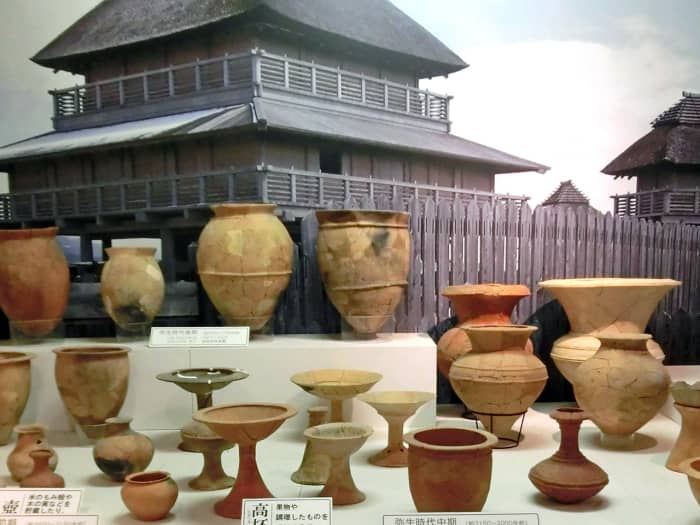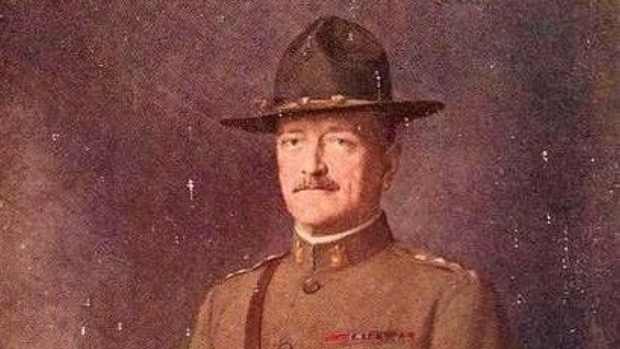Japanese History: A Timeline of Periods and Events

Hōryū-ji, with its famed pagoda in the background, is an example of Asuka-era architecture.
Wikipedia User: 663highland
Japanese Historical Periods Timeline
- Jōmon (14,000 BC–300 BC)
- Yayoi (BC 900–AD 300)
- Kofun (AD 300–AD 538)
- Asuka (AD 538–AD 710)
- Nara (AD 710–AD 794)
- Heian (AD 794–AD 1185)
- Kamakura (AD 1185–AD 1333)
- Muromachi (AD 1333–AD 1573)
- Azuchi-Momoyama (AD 1573–AD 1603)
- Edo (AD 1603–AD 1868)
- The Meiji Restoration, Meiji, and Taishō Periods (AD 1868–AD 1926)
- Prewar Shōwa and World War II (AD 1926–AD 1945)
- Postwar Shōwa (AD 1945–AD 1989)
- Heisei (AD 1989–Apr 2019)
- Reiwa (May 2019–Present)
Jōmon Period (縄文時代 14,000 BC–300 BC)
The earliest evidence of human habitation in the Japanese archipelago dates from around 30,000 years ago, with evidence of ancient human inhabitation found in places such as Okinawa’s Yamashita Cave. From 13,000 BC onwards, a hunter-gatherer culture also gradually developed in the islands. This culture would eventually achieve significant cultural complexity.
In 1877, American archaeologist Edward S. Morse named this prehistorical period of Japanese history as Jōmon, the name itself meaning “cord-marked.” His choice of name was inspired by the way the above-mentioned hunter-gatherers decorated pottery by impressing rope-cords onto wet clay.
Of note, Shintoism creation myths state the founding of the Japanese Imperial Family to have happened during the Jōmon Period. However, there is no conclusive archaeological evidence supporting these claims.
Footnotes
- In academic discussions, the Jōmon Period is usually divided into the early, middle, and late/final eras. Most timelines, however, do not make this distinction.
- The most convenient place to learn about this prehistorical period of Japanese history is Tokyo National Museum, which has a sizable collection of Jōmon Period relics. Other major national museums, such as the Kyūshū National Museum, also have extensive displays.
- There are various recreations of Jōmon Period villages across Japan. For example, the Sannai-Maruyama Site in Aomori Prefecture, and the Kitakogane Site in Hokkaido.
- The most famous “face” of the Jōmon Period is perhaps that of the Dogū. These unique-looking earthen figurines are often mass-produced for sale as tourist souvenirs.

Yayoi Period pottery on display at Yoshinogari. The site is the best place in Japan to understand this prehistorical period of Japanese history.
Yayoi Period (弥生時代 BC 300–AD 300)
In most Japanese history timelines, the Yayoi Period overlaps the final years of the Jōmon Period. The name comes from a district of modern-day Tokyo where ancient, minimally decorated pottery from this era was first found. Often described as the Iron Age of Japan, this prehistorical period witnessed the growth of agricultural development. There was also noteworthy importing of weapons and tools, and agricultural technology, from China and Korea.
Geographically, Yayoi culture extended from southern Kyūshū to northern Honshū, with archaeological evidence suggesting the hunter-gathering culture of the Jōmon Period was progressively replaced by agricultural cultivation. Notably, one area that has fascinated researchers is the physical differences between the Jōmon and Yayoi people. The Yayoi tend to be taller than the Jōmon, with facial features closer to those of modern-day Japanese.
Footnotes
- There is academic disagreement over when the Yayoi Period began. Some discussions place the start date as early as the tenth century BC.
- In the late 1990s, analysis of Yayoi remains uncovered in Southern Japan revealed similarities to those found in Jiangsu, China. A general belief is that the Yayoi people were immigrants from the Asiatic mainland.
- Yoshinogari in Kyūshū is the most famous and extensive reconstruction of a Yayoi Period settlement.
- The Chinese historical text, Records of the Three Kingdoms, mentioned Yayoi Japan. This ancient text named the ancient island nation as Yamatai and stated it was ruled by a priest-queen titled Queen Himiko.
- There has been much academic debate over whether “Yamatai” was the Chinese transliteration of Yamato (see next section).
- Other Chinese historical texts recorded Yayoi Japan as Wa (倭). In Chinese, the word means dwarf and would later be changed within Japan to Wa (和), which means harmony.
Aerial View of Kamiishizumisanzai Kofun in Sakai
Kofun Period (古墳時代 AD 300–AD 538)
The years following the Yayoi Period saw the gradual unification of half of the Japanese archipelago under one clan. Several rulers of this clan also constructed several elaborate burial mounds for themselves. This practice led to modern historians naming this era as Kofun. The name means “ancient tomb” in the Japanese language.
Centered in the Kinai (modern-day Kansai) area of Honshū, the unified kingdom soon came to be known as Yamato too, a name that’s still synonymous with historical Japan. During this period, the nascent country continued to be strongly influenced by culture, technology, and arts imported from China and the Korean Peninsula.
Buddhism also reached the country during the final years of the Kofun Period. Historically, the introduction of Buddhism marks the end of this pre-medieval period in the Japanese history timeline.
Footnotes
- The Yamato rulers based their rule on Chinese models. However, they did not have any permanent capitals. The capital was frequently shifted, a practice that continued till the Heian Period.
- The most representative landmarks of the Kofun Period are the immense keyhole-shaped burial mounds of rulers, many of which can still be found in the Kansai region.
- Based on the location of the above-mentioned burial mounds, the Yamato State is believed to have extended from Yakushima to present-day Niigata Prefecture.
- The Yamato State was not unchallenged. There were other clans coexisting with them. All of which were eventually subjugated.
Asuka Period (飛鳥時代 AD 538–AD 710)
The Asuka Period of Japanese history began with the introduction of Buddhism in the country. It was also characterized by significant socio-political and artistic changes.
Politically, the Yamato clan was affirmed as the supreme ruling entity of Southern Japan. At the height of this period, the famed Regent Prince Shōtoku introduced a new court hierarchy and constitution, both of which were inspired by Chinese ideals and systems. These new systems eventually formed the foundation for the next stage of Japan’s development as a proper nation.
Importantly, the Asuka Period further witnessed the beginning of a phenomenon that would continue to modern times.
In AD 587, the powerful Soga clan took over the government and became the de facto rulers. They were overthrown in AD 645, following which the Fujiwara clan monopolized power.
Throughout these decades, the Yamato Emperors remained in position, still venerated as supreme sovereigns, but with little or no power. This phenomenon of actual political might residing away from the Japanese throne will consistently be repeated throughout the next 13 hundred years. In a limited way, it curiously mirrors the systems of modern constitutional monarchies.
Footnotes
- The period is named after the Asuka region, which is south of modern-day Nara. Today, the Asuka region is a tourist hotspot for its various Asuka Period architectures and museums.
- Hōryū-ji, near the Asuka region, is home to several of the world’s oldest wooden structures. The temple was founded by Prince Shōtoku in AD 607.
- Prince Shōtoku was a devout Buddhist, credited with the founding of Japanese Buddhism. There are many temples associated with him throughout the Kansai region.
- Prince Shōtoku was also one of the first Japanese leaders to refer to his country as Nihon, or the Land of the Rising Sun.
- Asukadera Temple in Asuka contains the oldest known Japanese statue of the Buddha with an accepted date of creation (AD 609).

Majestic Tōdai-ji. Nowadays the most visited tourist attraction in Nara City and an icon of the Nara Period.
Nara Period (奈良時代 AD 710–AD 794)
Though the shortest period of medieval Japanese history, this brief era witnessed several significant events. These being, the establishment of the country’s first permanent capital at Heijō-kyō (modern-day Nara), the completion of Japanese literary classics such as the Kojiki and the Nihon Shoki, and Buddhism gaining permanent roots in Japan.


